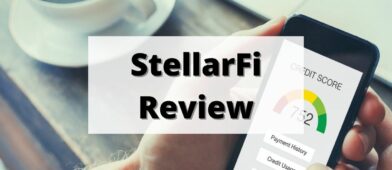If you want to save time and money, lower the amount of mistakes you make, and improve your finances all in one go – start automating your financial tasks.
I used to do a lot of financial tasks manually. It felt “safer.”
But it was all an illusion. It’s not safer to mail a bill payment. It’s not safer to set reminders of when to send things. It’s not safer just because it’s a physical piece of paper.
It’s just more friction. And friction leads to mistakes.
I came to realize this when I missed a payment for a bill because the envelope got shuffled up in some papers on my desk. It was filled out, the check was written, and the envelope was stamped. But it slid under a pile of papers on the corner of my desk and I only knew about it because I got a late notice (and a sizable penalty).
From then on, I realized I’d rather automate it all and deal with those fees than one of carelessness.
With that, here are the best finance tasks to automate:
Table of Contents
1. Bill Payment
You have fixed bills each month and if you aren’t automating those payments, you’re spending a lot of time doing things a computer is better suited for.
Here’s a list of all of our bills and how we pay them:
- Mortgage – automatically debited from our checking account
- Rent (we don’t pay rent) – You can pay rent with a Bilt card
- Utilities – automatically paid by our credit card
- Credit cards – automatically debited from our checking account
- Daycare – automatically paid by our credit card
- Cable bill (it’s just internet service) – automatically paid by our credit card
- etc.
You get the idea – all of our bills are paid automatically by a credit card or our checking account.
We use Ally Bank for our main checking account and it has free overdraft protection. If we happen to overdraw, it transfers cash from our savings account to cover it. As long as your bank offers something similar, there’s little risk to doing this.
The benefits are huge. You won’t miss any payments! You won’t pay late fees, you won’t take a hit to your credit, and you won’t feel embarrassed that you missed something like this.
The only potential risk to this involves auto-paying your credit card statements. If you want to dispute a charge but you’ve already paid the statement, the credit card will wait to refund you until after it has resolved the dispute in your favor. I get transaction notifications so we can catch anything strange or fraudulent the moment it happens so this isn’t a concern for us.
2. Retirement Savings & Investing
It’s well understood that when employers offer automatic enrollment in retirement plans, savings rates go up. It’s so well known that it was included in the Secure Act 2.0 that passed near the end of 2022 – now employees have to opt out of plans rather than opt in.
Automated savings programs work really well. Whether it’s transferring money into a savings account or making automatic contributions to a retirement plan or taxable brokerage account – you should be doing it.
If you make it manual, you won’t be as reliable as a computer in making those contributions.
If you have access to a 401(k) or similar account through work, make sure you set up those contributions. Get at least the minimum required to get any company match.
Next, set up automatic contributions to a Roth IRA if you are eligible. The Roth IRA contribution limit for 2024 is $7,000 ($8,00 if you are 50 and older). That’s $583.33 a month (plus an extra 4 cents during one of those months).
3. Financial Management & Budgeting
I track our net worth each month in an Excel spreadsheet and before the introduction of all of these fintech tools like Personal Capital, Tiller, and Mint (and more recently, Vyzer because we’re dealing with a lot of accounts that don’t automate nicely) – I’d log into each account manually and pull the figures.
There’s no reason to log into each account manually when these tools can pull all that data for you.
I still use the spreadsheet because I have a history with it. It’s tailored to what I need. But I use personal finance apps to help me manage our finances on a day to day (more realistically, a weekly) basis.
If you’re budgeting manually, it’s going to be very difficult to maintain. Before tools, I used to track our spending in a spreadsheet too. I recorded every transaction! It worked well when I was 20-something, had very little responsibility, and all the time in the world.
I could never do that today. But you don’t need to. The best budgeting apps will link to your spending accounts, collect that data, categorize it, and give you insights for what you should be doing.
4. Credit Monitoring
Keeping an eye on your credit is important but not urgent (see: Eisenhower Matrix), and so oftentimes we forget to do it. In the past, I used to recommend the waterfall method for monitoring your credit reports – request one of the three reports (Equifax, Experian, TransUnion) every four months and repeat.
But there are better options today in the form of credit monitoring services. These are free apps or services that keep an eye on any changes to your credit score. I don’t need to know my score but I do want to know if it makes any changes and why.
It usually fluctuates a few points each month because our credit utilization changes. The place to keep an eye out is if you have any recent inquiries and, most importantly, any new accounts you didn’t open.
The best part is that these services are free. If you see anything strange, that’s when you go to AnnualCreditReport.com and request your reports to verify it.
5. “Financial Planning”
I put financial planning in quotes because there are very few ways to automate this but the closest thing you can do, especially if you’re not going to go to a fee-only financial planner, is with roboadvisors.
Roboadvisors accomplish this by asking you a few questions and then constructing a portfolio of investments to help you achieve those goals. It’s automated in the sense that your portfolio is going to adjust as your age without your intervention.
It’s not a replacement for developing a financial plan. It can simplify investing.
Personally, I don’t use roboadvisors. I have nothing against them but I stick with a fairly vanilla portfolio of investments and don’t fuss with it too much. (though I do dabble in dividend stocks for fun – and by dabble I mean I buy and hold them for a long time)
A close version of this are target date retirement funds. These are mutual funds that adjust their allocation based on a target retirement date. Each fund has a different “glide path,” which is how conservative the fund becomes as you near the target retirement year, so you have to review these closely.
Vanguard, for example, has a target date fund for every five years starting in 2020 all the way to 2070. Their funds hold other Vanguard funds in allocations that make sense for someone aiming to retire in that year.
I also do not use target retirement funds. They can become tricky when you mix them with other holdings since your portfolio’s allocation will not match the target retirement’s targets.
6. Reading the News
Financial news is not really finance news – it’s financial entertainment. The only time I’ve watched any of the financial news channels is when I’m on a Southwest flight. The only time I read financial news websites is when something is breaking (which is rare).
That’s because I sign up for a variety of financial newsletters that curate the information for me. Rather than go to a few websites and read a bunch of articles, I can quickly scan a bunch of newsletters to see what the big news of the day.
Here are a few you should get (all are free):
- Morning Brew – solid for all around financial news
- The Hustle – this one is for business and entrepreneurship news
- Market Brief – five minute recap of the day’s news
Review Your Automations Annually
Lastly, remember to periodically review your automated tasks to ensure they’re still working for you (at least annually). They will periodically need to be updated and it’s important that you check in annually.
A prime example may be when Roth IRA contribution limits increase or if your income increases such that it impacts your limits. Or maybe you have to replace a credit card and now those automated payments need to be updated with the new credit card number.
Automation can help you save time and money but you still need to remember to check in on them.



